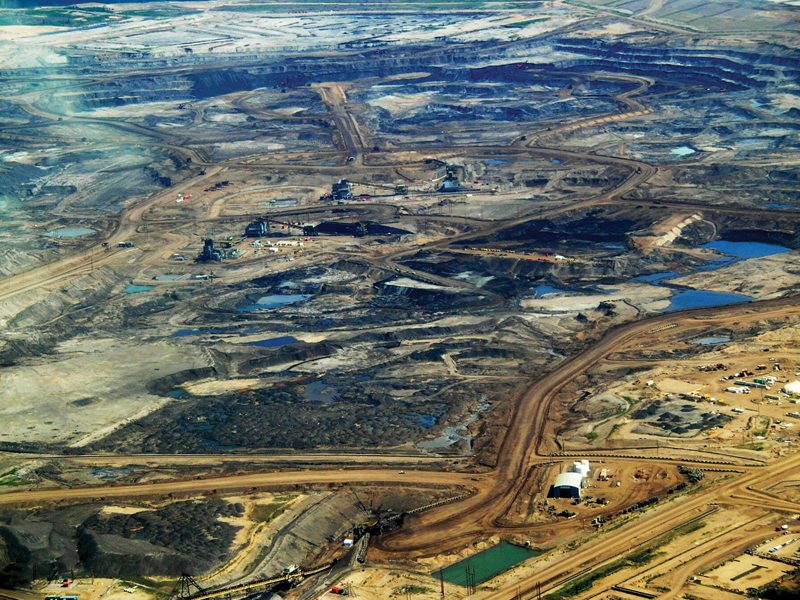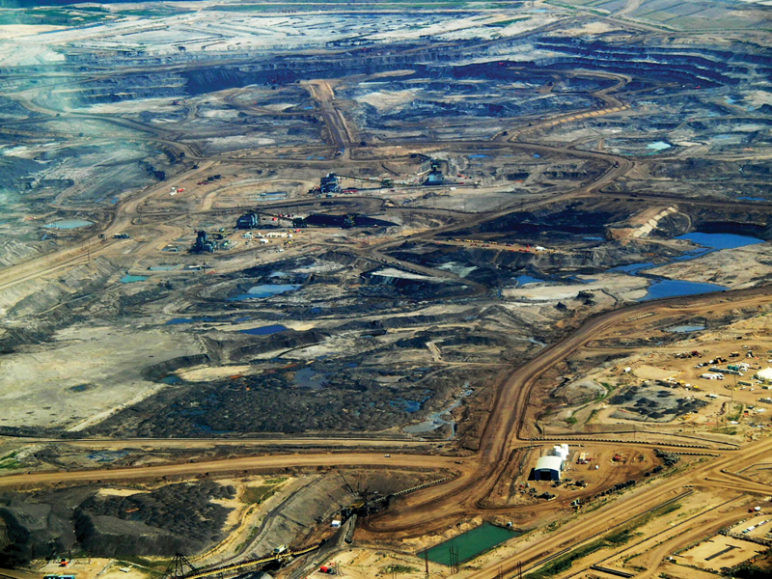Cascadians south of the 49th parallel have heard for years about the Keystone XL pipeline, but many of them know little or nothing about the two pipelines proposed to cross British Columbia: nearly Keystone-sized pipes that would sluice tar sands oil from Alberta to Asia by way of the Pacific Northwest coast. Both projects have been intensely controversial in Canada—probably even more so than Keystone was in the United States—and both may collapse in the face of stalwart opposition.
In hopes of shedding some light on BC’s pipeline backlash, we present a (very abridged) account of what’s happened lately.
The Basics

Original Sightline Institute graphic, available under our free use policy.
First announced in 2006, the Northern Gateway pipeline, backed by energy giant Enbridge, would run from Bruderheim, Alberta (near Edmonton), to a marine terminal at Kitimat, in northern BC. It would traverse about 730 miles, with an expected crude oil capacity of about 525,000 barrels per day. More recently, Kinder Morgan proposed an expansion of its existing line in southern British Columbia, the Trans Mountain Pipeline that would nearly triple its capacity to 890,000 barrels per day along the 710 miles from Edmonton, Alberta, to terminals near Vancouver, BC, and on Puget Sound in Washington.
The consequences of building either of the projects could be severe. Opponents worry about issues including the increased risk of oil spills on land or in marine waters, increasing greenhouse gas pollution from an expanded oil supply, abrogating the legal rights of First Nations, and further encouraging the destructive extraction techniques employed by Canadian oil sands companies.
Although each pipeline was proposed earlier, our story starts in 2012 when BC Premier Christy Clark announced five conditions that any company proposing to build oil pipelines in BC would need to meet before receiving approval from her Liberal Party government:
- Successful completion of the environmental review process.
- World-leading marine oil spill prevention, response, and recovery systems.
- World-leading practices for land oil spill prevention, response, and recovery systems.
- First Nations opportunities and treaty rights must be respected.
- British Columbia receives a fair share of the fiscal and economic benefits of proposed heavy oil projects that reflect the risk borne by the province.
The project backers promised to meet these conditions and commence building their pipelines, but their promises proved hollow.
Kinder Morgan’s Trans Mountain pipeline
In January 2016, the BC provincial government, through its Environment Minister Mary Polak, announced that it would formally oppose Kinder Morgan’s plans to expand the Trans Mountain pipeline because the company had failed to provide adequate plans for oil spills. The province did not rule out the possibility, however, that Kinder Morgan could meet those requirements in the future, and the company again promised compliance.
Yet just two days later, a BC Supreme Court decision complicated the review process further. In a ruling on the Northern Gateway project, the Court held that the province could not grant Canada’s National Energy Board sole jurisdiction over the project, which the province had done with both proposals. Instead, the Court determined that Victoria must complete its own environmental review, as well as consult with First Nations over the pipeline route and treaty rights for Northern Gateway. And the strong implication was that the province must undertake the same level of review for Kinder Morgan’s project, which it had not.
Within a few days of the BC Supreme Court decision, activists in Canada, alongside First Nations representatives, called on recently elected Canadian Prime Minister Justin Trudeau to halt Canada’s federal-level review of the Trans Mountain expansion. In the meantime, however, the National Energy Board was proceeding with hearings on the Kinder Morgan pipeline, even though “intervenors” in the case (including US tribes) were raising concerns that an oil spill in the Salish Sea could harm their fishing rights and cultural heritage.
Enbridge’s Northern Gateway pipeline
The #NorthernGateway pipeline has an expected crude oil capacity of about 525,000 barrels per day.
Though the Trans Mountain pipeline has faced numerous obstacles, it is in fact less troubled than the Northern Gateway project. Although the Canada national government conditionally approved the pipeline in 2014, project backer Enbridge has stumbled into a hornet’s nest of problems, among them a First Nations clan that for several years has opposed pipelines through its lands in northern BC. In addition, First Nations and environmental groups have launched multiple legal challenges against the project, including the one recently decided in the BC Supreme Court.
In November 2015, shortly after taking office, Prime Minister Trudeau directed his Transportation Minister to finalize a moratorium on oil tanker traffic along BC’s North Coast. Many observers believe the tanker moratorium would finish the Gateway project. Others are not so sure, and an Enbridge spokesperson reported that the company was consulting with lawyers on overturning the ban, if enacted. All the same, Enbridge reportedly must start construction activities by the end of 2016, or its permits for the project will lapse.
In January 2016, the Canadian government revised the national review of pipelines (as well as that of liquefied natural gas projects), which included delaying a federal cabinet decision on the Kinder Morgan expansion until December 2016. The proposal drew mixed reviews from pipeline promoters and opponents, and the ultimate outcome for the two BC oil pipeline projects remains uncertain.
Onward
Few regions in the world have seen an onslaught of coal, oil, and gas export projects comparable to the tsunami that has flooded the Pacific Northwest in recent years. Pinched between huge fossil fuel reserves in the interior of North America and the voracious energy markets of Asia, Cascadia is proving that a vigorous opposition movement can defy even the most powerful industries on earth. Like so many projects in Oregon and Washington, the big oil pipelines in British Columbia, originally considered sure bets, are running aground on a cross-border wall of resistance, the thin green line.
More Thin Green Line research here.
John Abbotts is a former Sightline research consultant.













Bill Frisinger
Less pipelines means more oil trains. I feel the trains are more dangerous for both the environment and people.
John Abbotts
Hello Bill,
We appreciate your comment, and your interest in Sightline’s work.
You are correct on the dangers of oil trains, and other Sightline articles have reported on the explosive hazards and the low liability coverage that railroads carry to cover damages.
I want to make clear that I am speaking for myself alone here. And my take is that the Pipelines in BC were proposed to sluice tar sands oil to the coast. As seen in the image above, and in documentary videos around the web, tar sands extraction is highly damaging to the environment, as well as to First Nations lands.
So in my opinion, fighting the pipelines also means fighting tar sands extraction.
Even if we disagree on this article, I hope you will continue to follow the news on energy and fossil-fuel trains, and continue your activism as part of the Thin Green Line.
Sincerely,
John
sharon mccullough
Thank you for your post.
Prolonging and promoting fossil fuel in any form is ignoring serious issues of climate change. Pipelines are a false security.
Change is not optional. Kicking dead horses by corporate politicians over pipelines helps no one.
Existing pipelines and building more, especially with such massive amounts of gritty bitumen gushing, puts us at extreme risk. It make us more dependent on other nations while seriously risking our security in such troubled times, prolongs our dependence and exacerbates the global threat.
How much damage and loss of life is worth a broken gushing pipe of 100’s of 1,000’s of barrels going to impact a lake or river in a valley, source of Lake Superior, Lake Ontario? The horrors we risk are astronomical. For what ?
Leave it in the ground.
Yes, trains are dangerous. We could start reductions right there.
Science tells us – tells us – to leave it in the ground; it is not a choice. Science gave us clear facts, it’s our duty is to heal the gaping wounds, cover that vile smelling pus threatening to extinct life.
We want all of us to have good jobs and a decent quality of life. Trade more within our borders. Green and clean has more secure employment than oil ever will again. Why fight it?
Rona Palin and Andrew Trump regurgitate the right corporate talking points. Ad nauseam they defend a dead issue rather than guide or lead to the future. It’s all about their gain but all our risk.
Are we for the Earth or corporate welfare?
Our representative should prepare citizens for the millions of employment opportunities in the green / clean industry.
The world can’t evolve around bitumen and pipelines. It’s about the future of our Planet. Our west will be in bad shape if they don’t look beyond next Christmas.
Please support clean, renewable energy and a future for our grandkids and great grandkids. Thank you for reading. Have a thoughtful day.
John Abbotts
Sharon,
Thank you for your comments and thoughts.
Jon. Anderson
Here’s an idea: Instead of shipping our natural resources to Asia, why don’t we refine them on/near the production site, and use them here in North America? Less likelihood of spills, leaks, and damage to the marine environment. More jobs for Canadians & Americans. Cheaper fuel for the citizens. Only drawback is less profits for Big Oil?
John Abbotts
Hello Jon,
Thank you for your comments, and your interest in Sightline’s work. You may not be surprised to find that your thinking is in tune with recent Sightline articles.
Unfortunately, as Anna Sewell and Eric described, Big Oil prevailed on Congress to repeal a law that for forty years generally prohibited export from the U.S. of crude oil.
Their article, describing the Congressional repeal in December 2015, and the consequences for Cascadia, can be found at http://www.sightline.org/2016/02/29/killing-the-crude-oil-export-ban-a-postmortem/
They also provide links to other information sources on the oil export ban.
I hope this information may be useful.
Best wishes,